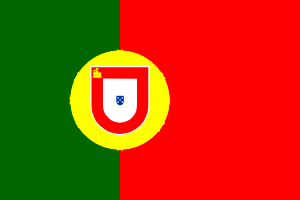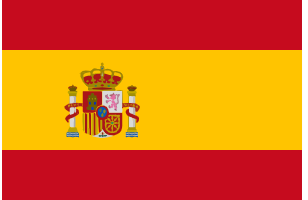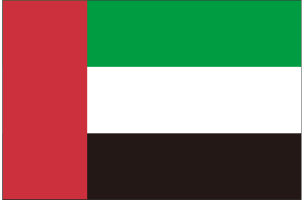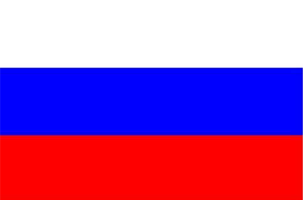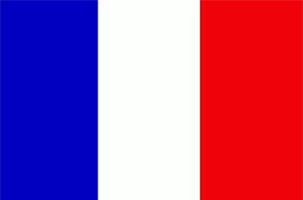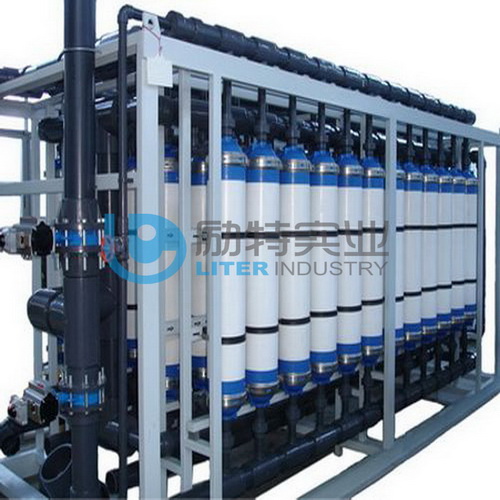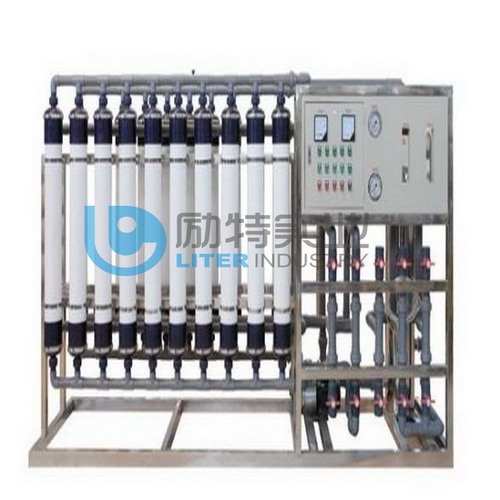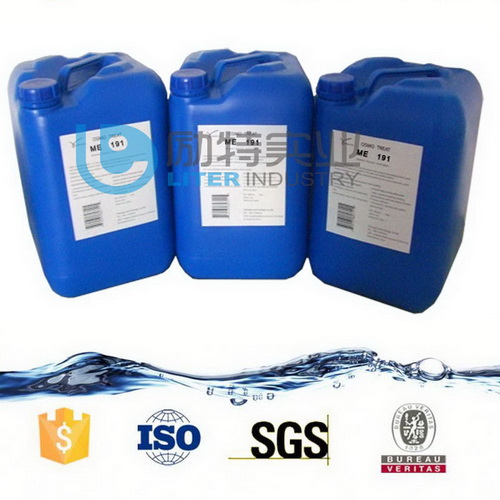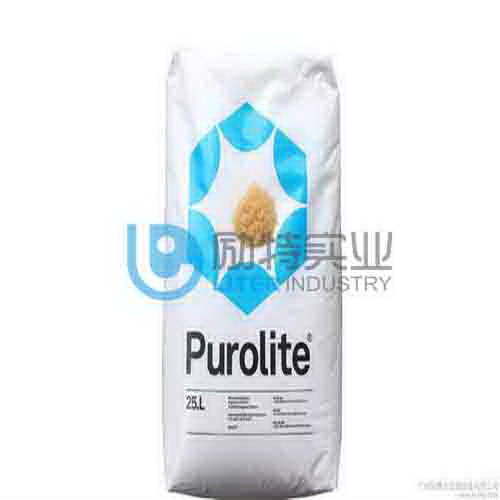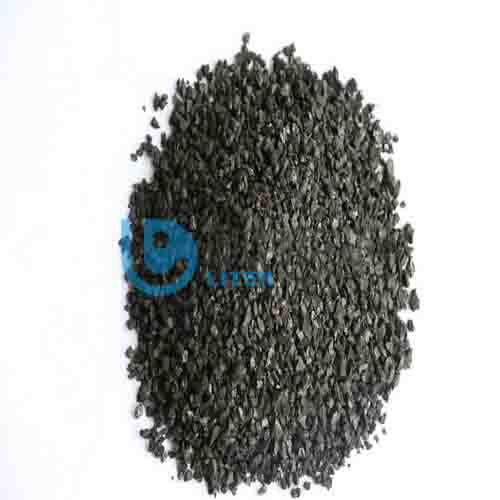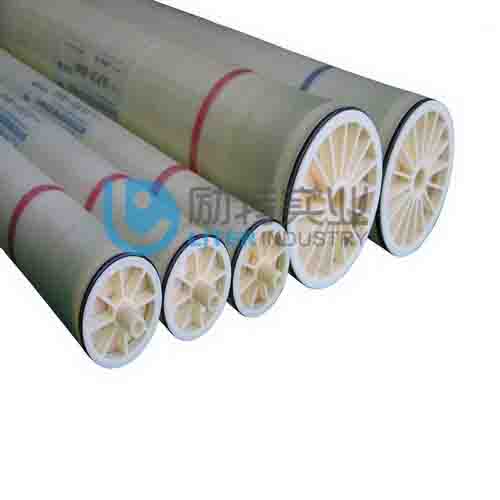- The product description
- The main function
- The basic parameters
1. Basic functions
1. Directly prepare pure water that meets the standards from tap water or groundwater;
2. Water shortage protection;
3. Shut down when the water is full;
4. The pre-filter is self-cleaning;
5. On-line monitoring function of water quality;
6. The system automatically cleans when the machine is turned on and off to extend the service life of the machine;
2. Product features:
1. The effluent water quality meets the national direct drinking water standards, and meets the water standards for the food and beverage industry;
2. Simple installation, convenient use, one-key operation;
3. Alarm function for unqualified water quality;
4. Integrated design, less floor space.
5. Using RO reverse osmosis process, the cost of using consumables is low.
Remarks:
1. Model description: such as LT-RO1500GPD, LT: Brand: Liter Industry, A: represents first-level reverse osmosis, -1500 is 500GPD per hour, P/F is made of PVC for pipes, and F is made of all stainless steel,- 1 is the factory version 1.0 standard;
2. This selection table is a conventional 10T/H equipment selection table, and the equipment larger than this water output will be customized according to the engineering machine;
3. This equipment can be made of FRP material and 304 stainless steel material;
4. The external dimensions in the selection table are for reference, and the suitable size can be customized according to the specific location of the user. The data is length X width X height; the size of the water tank is not included in the size;
5. In this selection table, explosion-proof pure water equipment can be customized according to customer requirements;
6. The equipment voltage exceeds the rated requirements, and 110V or 200V voltages can be customized according to user needs;
The equipment model or technical modification will not be notified separately, and the customer service of the manufacturer shall prevail before leaving the factory.
3. Application scope of pure water equipment
1. Food and beverage, hotel water, paint, painting industry;
2. Dishwashing detergent preparation industry;
3. Fine chemicals, hardware cleaning, valve industry cleaning and testing industry;
4. Deionized pure water systems for other industries that meet water quality.
5. Pure water equipment for ultrasonic cleaning, cleaning products and objects.
Ultrafiltration equipment is a membrane separation process that uses pressure as the driving force and the principle of sieving separation. Ultrafiltration equipment can effectively remove colloids, bacteria, particles and polymer organic substances in water. Now it can be widely used in concentration, purification and material separation. Ultrafiltration equipment can be operated at room temperature, has good temperature resistance, acid and alkali resistance, and was used in the treatment of sewage and wastewater in the early industrial ultrafiltration equipment. In the past 30 years, with the continuous progress and development of ultrafiltration equipment, the application fields of ultrafiltration equipment have become more and more extensive, including beverage industry, food industry, biomedicine, bio-fermentation, pharmaceutical and chemical industry, and traditional Chinese medicine. Preparations, clinical medicine, resource recovery, food industry wastewater treatment and environmental protection projects, etc.
(1) Control mode: fully automatic PLC or manual (2), pH range: 3~9 (3), working temperature: 5~35°C (4), working pressure: <0.3 MPa (5), maximum Pressure difference: <0.18 MPa
Purpose of ultrafiltration equipment:
1. Recycling of sewage and wastewater
Some Western countries have used some methods to treat sewage, but the effect after treatment is not good, and there is no fundamental and thorough treatment. In addition, the relatively low price of ultrafiltration equipment provides powerful conditions for wastewater recycling and reuse. In fact, the wastewater discharged from urban sewage treatment plants and factories can be completely reused after treatment. However, such practices are hard to be trusted by Western users.
2. Surface water treatment
Ultrafiltration equipment is mostly used on surface water treatment. The treated water is used for irrigation or as reverse osmosis feed water to prepare industrial water. The number of such factories in the Netherlands and other places is gradually increasing. This technique provides that surface water can be accessed nearby without having to purchase more and more expensive drinking water.
3. Drinking water treatment
Because of the improvement of living standards, people have higher and higher requirements for the quality of drinking water. Water treatment companies are concerned about controlling the amount of microorganisms present in the water supply pipe network. In order to achieve this, one way is to stop expensive and frequent water quality inspections, or set up barriers at the water supply terminal to prevent bacteria and viruses from entering. With the UF system, what a barrier can be easily built. The removal rate of ultrafiltration membranes for bacteria can reach 6log, and the removal rate for viruses can reach 4log, so water plants and water users do not have to worry about bacteria and viruses. Because the quality of drinking water itself is very high, the membrane system at this time can use a high membrane flux, which can reach 135 liters/square meter/hour. At the same time, the premise of higher water inflow is that both the frequency of backflushing and the frequency of chemically enhanced backwashing can be very low, and the water production can reach 99%. If necessary, a secondary ultrafiltration device can be set up to further reuse the first-stage backwash water.
4. Used for seawater desalination
The Middle East is the most severely lacking water capital. In order to understand this title, the earliest people usually used distillation techniques. From the 1960s, membrane techniques have been used to deal with the water scarcity of these countries. However, many reverse osmosis seawater desalination (using semi-permeable membranes to produce seawater for seawater desalination) (using seawater for desalination of seawater to produce seawater) systems are facing the title of serious membrane pollution. It is important because the traditional pretreatment methods of reverse osmosis systems cannot provide reliable influent water quality. Therefore, most of the desalinated chemical plants work far below their designed water output, and even the output of some plants does not reach 30% of the final design. The research on small desalination devices clearly shows that ultrafiltration equipment can control the water quality of seawater with great control and provide high-quality influent water for the reverse osmosis system. Endurance experiments have also shown that the effluent SDI value of the ultrafiltration system can be well controlled below 2. These tests do not require any pretreatment before the ultrafiltration system (also known as ultrafiltration equipment), and are applicable to various types of seawater quality.
Large ultrafiltration equipment
Application areas of ultrafiltration equipment:
1. Mineral water: Ultrafiltration technology is used in mineral water manufacturing. In engineering design, the pore size and type of membrane will be selected according to the source water quality analysis report of mineral water, and the ultrafiltration design will be designed.
2. Food: Ultrafiltration equipment is gradually used in the production of dairy products, fruit juices, wine, condiments and other foods, such as separation of protein and low molecular weight lactose from water in milk or whey, clarification and sterilization of fruit juices, and wine The removal of colored proteins, polysaccharides and other colloidal impurities, and the removal of bacteria in soy sauce and vinegar, show the advantages of economy, reliability, and quality assurance compared with traditional methods.
3. Medicine: In the production of medicine and biochemical industry, it is often necessary to separate and purify heat-sensitive substances. Ultrafiltration equipment shows its outstanding advantages for this. Using ultrafiltration equipment to separate and concentrate biologically active substances (such as enzymes, viruses, nucleic acids, special proteins, etc.) is quite suitable for drugs extracted from animals and plants (such as alkaloids, hormones, etc.), and there are often macromolecules in the extract. Or solid substances, in many cases can be separated by ultrafiltration to improve the quality of the product.
4. Pure water and ultrapure water: primary purification of industrial water, RO pretreatment of pure water and ultrapure water preparation, and terminal treatment of pure water and ultrapure water.
5. Environmental protection: advanced treatment of industrial wastewater, urban reclaimed water reuse system, electrophoresis paint and oil recovery.
6. Fermentation: separation and refining of biochemical fermentation broth, concentration and refining of enzymes, clarification and filtration of sugar and xylitol.
Ultrafiltration equipment is a membrane separation process that uses pressure as the driving force and the principle of sieving separation. Ultrafiltration equipment can effectively remove colloids, bacteria, particles and polymer organic substances in water. Now it can be widely used in concentration, purification and material separation. Ultrafiltration equipment can be operated at room temperature, has good temperature resistance, acid and alkali resistance, and was used in the treatment of sewage and wastewater in the early industrial ultrafiltration equipment. In the past 30 years, with the continuous progress and development of ultrafiltration equipment, the application fields of ultrafiltration equipment have become more and more extensive, including beverage industry, food industry, biomedicine, bio-fermentation, pharmaceutical and chemical industry, and traditional Chinese medicine. Preparations, clinical medicine, resource recovery, food industry wastewater treatment and environmental protection projects, etc.
(1) Control mode: fully automatic PLC or manual (2), pH range: 3~9 (3), working temperature: 5~35°C (4), working pressure: <0.3 MPa (5), maximum Pressure difference: <0.18 MPa




